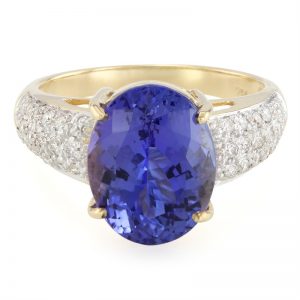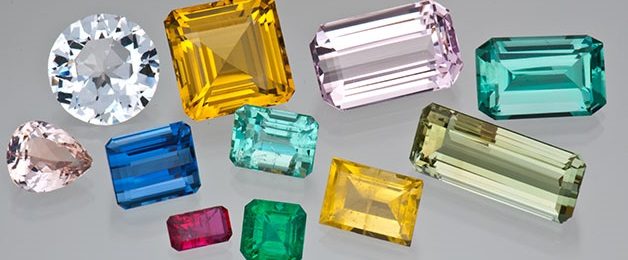Tanzania is known for its exceptional gemstone treasures including the passionate Tanzanian Ruby, the valuable Vanadium Chrysoberyl, and the green garnet variety Merelani Tsavorite.
The most famous gemstone representative of the East African country is Blue Tanzanite. This gem was sought after as a less expensive alternative to Sapphire but has since become extremely popular in its own right due to its amazing blue-violet hue. Lesser known colours including green, yellow, Fuchsia and Chameleon Tanzanite are also available. These varieties are even rarer than the blue-violet variant, but are not so well known. Tanzanite is noted for its remarkably strong trichroism, appearing alternately blue, violet and burgundy depending on the angle it is displayed. Tanzanite can also appear differently when viewed under alternate lighting conditions.

Fancy Tanzanite
Tanzanite’s Steep Climb to Popularity
The blue-violet Zoisite has managed in a very short time to become the absolute favourite of many gemstone collectors around the world. Tanzanite was discovered by the jewellery world in 1967 by Portuguese tailor and part-time gold prospector, Manuel D’Souza, who was living in Arusha. The indigenous, nomadic Maasai herdsmen have worshiped Tanzanite for a very long time and still give the stone ceremoniously at the birth of a child.
D’Souza was actually looking for Sapphires when he found the bluish-violet minerals in 1967. After closer gemological determination these crystals turned out to be a previously unknown variety of Zoisite. Since then, this gemstones popularity has grown steadily and its history is filled with superlatives; “The most important gemstone find for more than 2,000 years,“ Henry B. Platt, the former president of Tiffany & Co., stated about the discovery, “1000 times rarer than diamond “, “The rough stones can only be found in one place in the world – with a chance of one in a million, that there is another source on earth”, ” the fashion gemstone of the 20th century “, ” in within 10 years the mine will be exhausted “.

18K AAA Tanzanite Gold Ring from Rocks & Co
Considerable Price Development
Tiffany & Co, or rather Henry B. Platt, the great grandson of Louis Comfort Tiffany, played a very large a role in the marketing and the legendary ascent of this gemstone. Changing its name to Tanzanite from blue Zoisite as the later sounded to Platt, too much like ” blue suicide”. However, the success of Tanzanite would hardly have been possible without its remarkable beauty which draws every viewer under its spell.
It is no surprise then, that Tanzanite has experienced a price increase of over 50% in the last 10 years, AAA tanzanite by over 200%.
If you’ve known Rocks & Co for a little while, you might be surprised at these figures, as our prices have remained pretty stable. This is simply because our gemstone buyer Don Kogen acquired Tanzanite a long time ago, and Rocks & Co passes on these savings to you.

Tanzanite Pendant from Rocks & Co
The True Joy of Gemstones
When purchasing a Tanzanite you should always certify its authenticity as unfortunately, with all popular gemstones, there are many imitations on the market. Therefore make sure to only buy this incredible gem only from sellers you trust, so that apparent bargains do not turn out to be coloured glass – “smoke and mirrors!”






